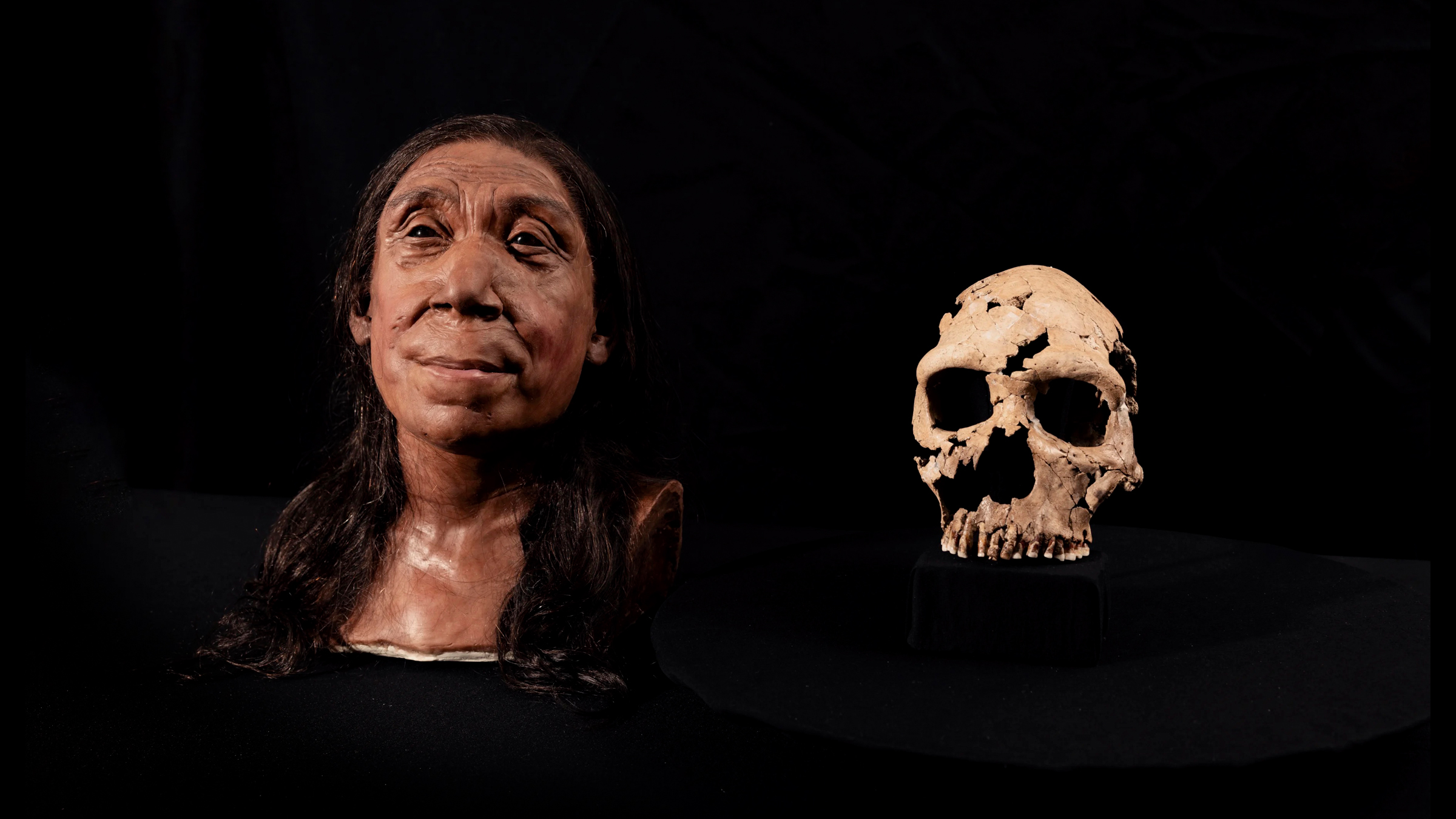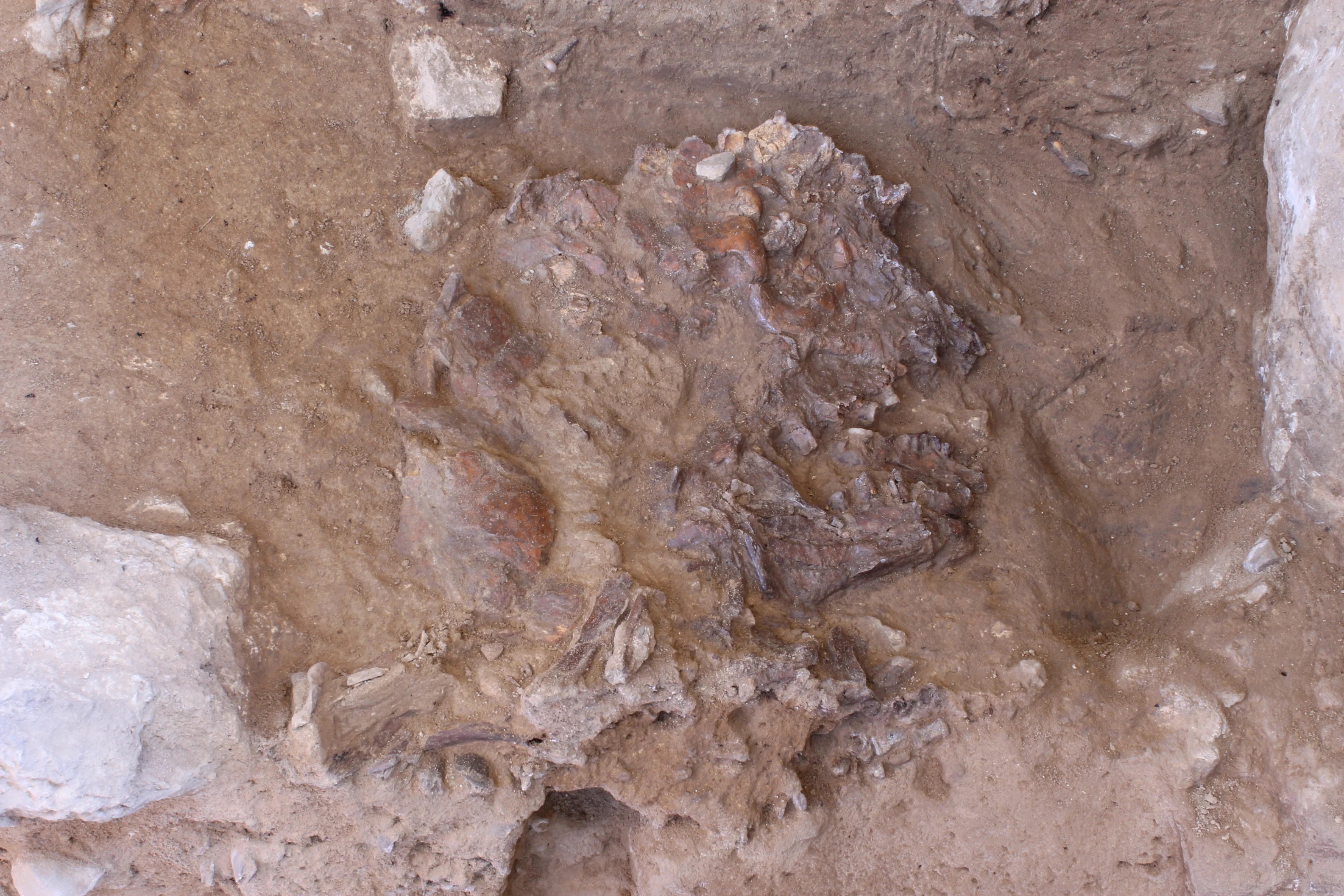Neanderthal woman's face brought to life in stunning reconstruction
With her long, brown hair and determined gaze, the new facial reconstruction lets us peek into the world of an archaic human who lived tens of thousands of years ago.

A Neanderthal skull that was crushed to bits 75,000 years ago has been pieced back together and used to recreate the face of a wise-looking archaic woman with dark, flowing hair.
Archaeologists painstakingly pieced together the skull of the individual, who researchers have named Shanidar Z, from hundreds of flattened bone fragments discovered inside Shanidar Cave in Iraqi Kurdistan in 2018. Her skull is believed to have been crushed shortly after her death, possibly by rockfall, and then compacted by tens of thousands of years of sediment.
And now, with the help of surface scans and 3D-printing techniques, archaeologists have brought her synthetic face to life — muscle, skin and all. They detailed their efforts in a new documentary titled "Secrets of the Neanderthals," which launched on Netflix May 2.
"The skulls of Neanderthals and humans look very different," Emma Pomeroy, a paleoanthropologist at the University of Cambridge who's featured in the documentary, said in a statement.
Related: Weathered face of 'old man' Neanderthal comes to life in amazing new facial reconstruction
"Neanderthal skulls have huge brow ridges and lack chins, with a projecting midface that results in more prominent noses," she said. "But the recreated face suggests those differences were not so stark in life."
Neanderthals were the closest relatives of modern humans. They lived in Eurasia from around 400,000 years ago until they died out approximately 40,000 years ago. However, during that time, possibly as far back as 250,000 years ago, Neanderthals interbred with Homo sapiens who'd ventured out of Africa and into Eurasia. The genetic legacy of these interbreeding events still lives on today.
Sign up for the Live Science daily newsletter now
Get the world’s most fascinating discoveries delivered straight to your inbox.
"It's perhaps easier to see how interbreeding occurred between our species, to the extent that almost everyone alive today still has Neanderthal DNA," Pomeroy said.

Shanidar Cave was originally made famous by archaeological discoveries back in the 1950s, which uncovered several Neanderthals who looked like they'd been buried there in succession. These findings suggested that this cave was a burial spot used by these archaic humans.
So far, the remains of at least 10 Neanderthals have been excavated from the cave. However, archaeologists think Shanidar Z is potentially the best preserved of them all. Her remains — which include part of a skeleton nearly to her waist — were carefully exposed under 24.6 feet (7.5 meters) of soil and rock and removed for analysis in dozens of small, foil-wrapped blocks.
Archaeologists couldn't find her pelvic bones, so they determined her sex by studying a protein in her teeth enamel. These analyses also shed light on her age, as revealed by progressive, age-related signs of wear and tear. The team thinks Shanidar Z may have been in her mid-40s and around 5 feet (1.5 m) tall.

Emily is a health news writer based in London, United Kingdom. She holds a bachelor's degree in biology from Durham University and a master's degree in clinical and therapeutic neuroscience from Oxford University. She has worked in science communication, medical writing and as a local news reporter while undertaking NCTJ journalism training with News Associates. In 2018, she was named one of MHP Communications' 30 journalists to watch under 30. (emily.cooke@futurenet.com)









